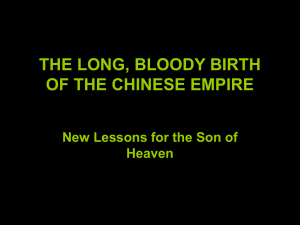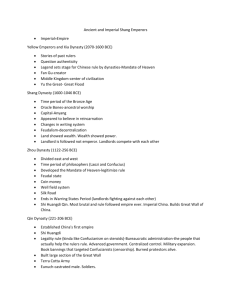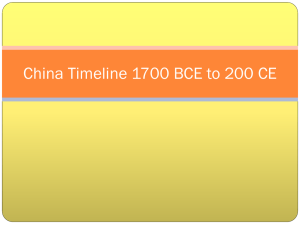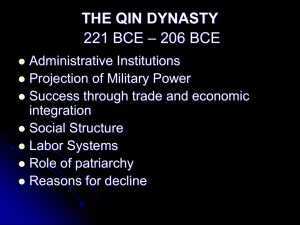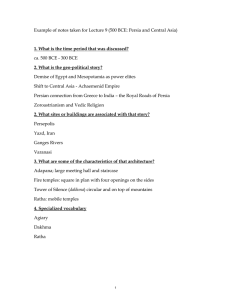HANDOUT FOR LECTURE 12: THE SILK ROUTE AND CHANG’AN PEOPLES
advertisement
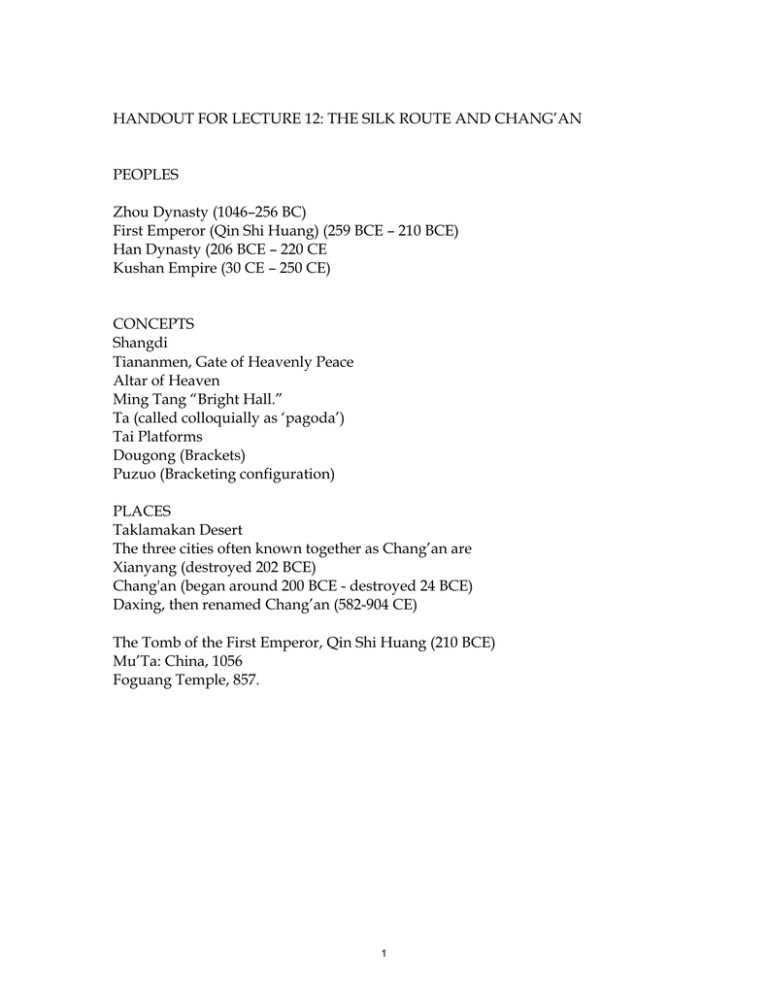
HANDOUT FOR LECTURE 12: THE SILK ROUTE AND CHANG’AN PEOPLES Zhou Dynasty (1046–256 BC) First Emperor (Qin Shi Huang) (259 BCE – 210 BCE) Han Dynasty (206 BCE – 220 CE Kushan Empire (30 CE – 250 CE) CONCEPTS Shangdi Tiananmen, Gate of Heavenly Peace Altar of Heaven Ming Tang “Bright Hall.” Ta (called colloquially as ‘pagoda’) Tai Platforms Dougong (Brackets) Puzuo (Bracketing configuration) PLACES Taklamakan Desert The three cities often known together as Chang’an are Xianyang (destroyed 202 BCE) Chang'an (began around 200 BCE - destroyed 24 BCE) Daxing, then renamed Chang’an (582-904 CE) The Tomb of the First Emperor, Qin Shi Huang (210 BCE) Mu’Ta: China, 1056 Foguang Temple, 857. 1 First Emperor (Qin Shi Huang) (259 BCE – 210 BCE) - unified China by means of military conquest - undertook gigantic projects, including the first version of the Great Wall of China. - unified China economically by standardizing the Chinese units of measurements such as weights and measures, the currency, the length of the axles of carts to facilitate transport on the road system. - developed an extensive network of roads and canals connecting the provinces to improve trade between them.[ - standardized script which was then made official throughout all the conquered regions, thus doing away with all the regional scripts to form one language, one communication system for all of China. - ordered most existing books to be burned with the exception of those on astrology, agriculture, medicine, divination, and the history of the State of Qin. - eliminated free expression. The only law of the land was “Legalism,” basically a system that required the people to follow the laws or be punished accordingly. - expelled hundreds of thousands of people from China mainly to the south, the Viet, Thai and Laos people in particular. Tiananmen (“heaven – instruction”) The Mandate from Heaven Developed during the Zhou Dynasty (1046–256 BC) 2 3 MIT OpenCourseWare http://ocw.mit.edu 4.605 Introduction to the History and Theory of Architecture Spring 2012 For information about citing these materials or our Terms of Use, visit: http://ocw.mit.edu/terms.
